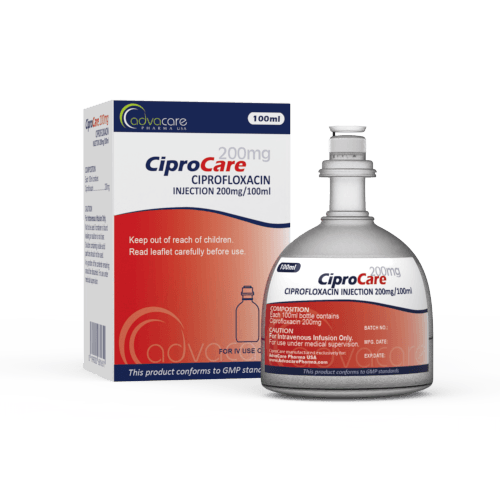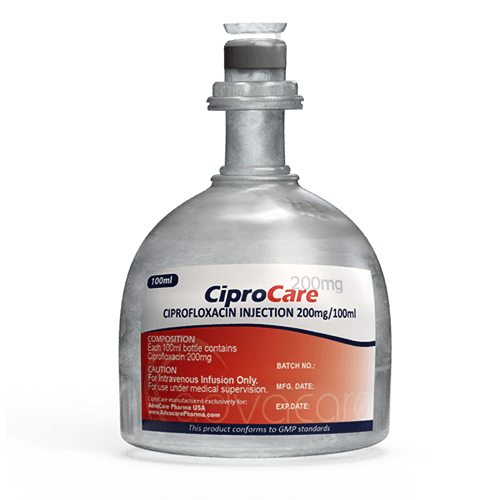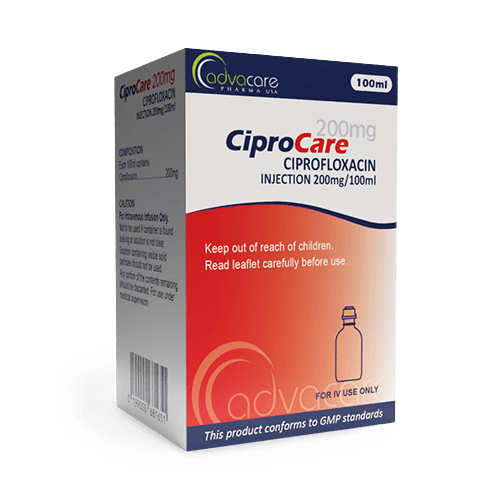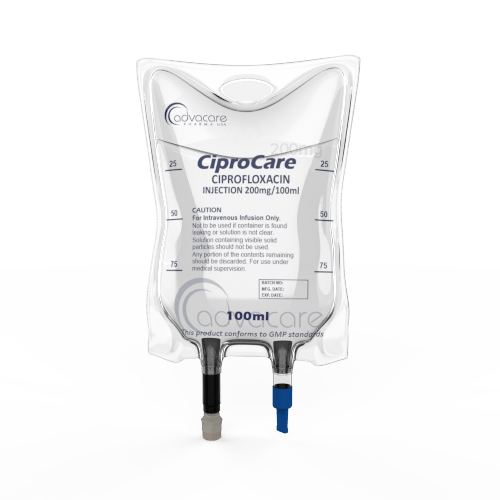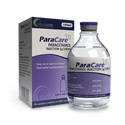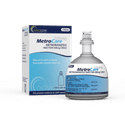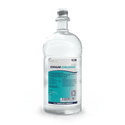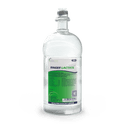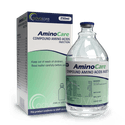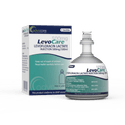- Home›
- Pharmaceuticals›
- Injections›
- Large Volume Injections›
- Ciprofloxacin Injection
Ciprofloxacin Injection
Dosage
Packaging
What is Ciprofloxacin?
Active Ingredients: Ciprofloxacin
Ciprofloxacin Injection is an antibiotic drug used in the treatment or prevention of bacterial infections. This medication is used to treat infections in many areas of the body, including the lungs, urinary tract, genital tract, gastrointestinal (GI) tract, skin and soft tissue, eyes, bones, and joints. This antibiotic is effective against many Gram-negative and Gram-positive bacteria.
This medication is also used as post-exposure prophylaxis and curative treatment for anthrax inhalation. It may also be used to prevent or treat plague.
Ciprofloxacin, a second-generation fluoroquinolone, has been FDA approved since 22 October 1987. It works by interfering with the enzymes responsible for DNA replication, this stops protein synthesis. Its function is through inhibition of the bacterial DNA gyrase and topoisomerase IV. This drug has a 100 times bigger affinity to bind to bacterial DNA gyrase than mammalian DNA gyrase. Ciprofloxacin targets the alpha subunits of DNA gyrase and prevents it from supercoiling the bacterial DNA, which leads to the suppression of DNA replication. This antibiotic does not show a cross-resistance between fluoroquinolones and other classes of antibiotics. Sometimes, this antibiotic is added when other antibiotics are no longer effective. Ciprofloxacin is yet to be investigated for its action against cancers, malaria, and AIDS.
This antibiotic is a concentration-dependent antibiotic, and the pharmacokinetics and pharmacodynamics depend on the dose.
The metabolism of Ciprofloxacin is through CYP1A2. The primary metabolites are oxo ciprofloxacin and sulociprofloxacin, which make up around 3-8% of the total dose. This drug can be converted into smaller metabolites like desethylene ciprofloxacin and formylciprofloxacin. After intravenous administration, 46% of the drug is metabolized in urine. The half-life of the drug is 3.65 hours after a 100mg intravenous dose. The clearance after intravenous administration is 9.62ml/min*kg. The average renal clearance is 4.42ml/min*kg, and the average non-renal clearance is 5.21ml/min*kg.
After intravenous administration, the drug is widely distributed in most extracellular and intracellular fluids. It can concentrate in the prostate, bile, and lungs. The metabolism is done in the liver, and the drug is excreted in urine.
This injection has been manufactured as a sterile, single-dose container for intravenous administration.
AdvaCare Pharma's Ciprofloxacin Injections are manufactured in GMP-certified factories located in China, India, and the USA. We routinely inspect our production facilities to ensure our products meet health, safety, and environmental standards.
Why are we a quality Ciprofloxacin manufacturer?
AdvaCare Pharma is a leading manufacturer of Ciprofloxacin Injection. For 20 years, we have been in the business of manufacturing GMP-approved high-quality, affordable pharmaceutical injection products to improve healthcare worldwide. Our control of the supply chain is data-driven and methodical, supported by highly skilled teams of professionals.
As a large-scale Ciprofloxacin manufacturer, we supply pharmaceutical distributors, hospitals, pharmacies and other medical organizations in more than 65 countries.
Uses
What is Ciprofloxacin used for?
It is used to treat various bacterial infections, such as:
- lower respiratory tract infections due to gram-negative bacteria
- exacerbations of chronic obstructive pulmonary disease
- bronchopulmonary infections in cystic fibrosis or in bronchiectasis
- pneumonia
- chronic suppurative otitis media
- acute exacerbation of chronic sinusitis
- urinary tract infections
- genital tract infections
- epididymal-orchitis, including cases due to susceptible Neisseria gonorrhoeae
- pelvic inflammatory disease
- infections of the gastrointestinal tract (e.g., traveler's diarrhea)
- intra-abdominal infections
- infections of the skin and soft tissue
- malignant external otitis
- infections of the bones and joints
- anthrax inhalation (post-exposure prophylaxis and curative treatment)
How should Ciprofloxacin Injection be used?
This medication is manufactured as a solution, which should only be administered by a doctor or healthcare provider.
What dose should be given?
Recommended dosage guidelines may vary depending on medical condition:
- For urinary tract infections, the usual dose for adults is 200-400mg, given every 8-12 hours. The duration of treatment is 7-14 days.
- For infections of the skin/skin structure or lower respiratory tract, the usual dose for adults is 400mg, given every 8-12 hours. The duration of treatment is 7-14 days.
- For nosocomial pneumonia, the usual dose for adults is 400mg, given every 8 hours. The duration of treatment is 10-14 days.
- For complicated intra-abdominal infections, the usual dose for adults is 400mg, given every 12 hours. The duration of treatment is 7-14 days.
- For bone/joint infections, the usual dose for adults is 400mg, given every 8-12 hours. The duration of treatment is 4-8 weeks.
- For post-exposure to inhalational anthrax, the usual dose for adults is 400mg, given every 12 hours. The duration of treatment is 60 days.
- For plague, the usual dose for adults is 400mg, given every 8-12 hours. The duration of treatment is 14 days.
Refer to a doctor or pharmacist for guidelines on dosage. Do not exceed what they advise.
Who can use Ciprofloxacin Injection?
Ciprofloxacin should be used for treating antibiotic-sensitive infections in humans. It can be used for treating respiratory, genital, and urinary infections, gastrointestinal and intra-abdominal infections, soft tissue infections, and infections in neutropenic patients. It can be used as a post-exposure prophylaxis and curative treatment after anthrax inhalation. Special caution must be taken when administered to the specific population of patients.
Pregnant Doctors should administer this drug with caution in pregnant women. Usually, this drug is not recommended during pregnancy. During the first trimester, this drug does not lead to an increased risk of major malformations and other adverse effects during pregnancy. In animal studies, Ciprofloxacin has been shown to cause arthropathy in immature animals. It does not lead to teratogenicity, fertility impairment, or peri- and postnatal development. There also might be risks of cartilage damage of joints in the growing individuals.
This antibiotic during pregnancy should be added only in cases of complicated infections caused by pathogens that are resistant to other antibiotics.
Lactating Women Fluoroquinolones should be avoided during breastfeeding. Ciprofloxacin can be excreted through milk in women. If the benefits outweigh the risks of administering Ciprofloxacin, women should avoid breastfeeding for 3-4 hours after exposure to the antibiotic. This is done to decrease the exposure of the infant to Ciprofloxacin.
Pediatric Ciprofloxacin can lead to arthropathy (arthralgia and arthritis) in younger patients and should be used with caution. It is not the first drug of choice for pediatric patients. In children, it is especially recommended for pseudomonal broncho-pulmonary infections in cystic fibrosis.
Elderly Older patients can develop severe tendon disorders, including tendon rupture. There is also an increased risk when patients receive corticosteroid therapy. Tendon rupture can involve the hand, shoulder, or Achilles. Also, there is an increased rate of aortic aneurysm and dissection 2 months after the treatment process. However, some retrospective studies show that there are no significant side effects in patients over 65 years.
Can Ciprofloxacin Injection be used for treating viral infections?
No, Ciprofloxacin is an antibiotic that cannot treat viral infections. However, it can be useful in the treatment process of secondary bacterial infections due to the virus.
Other warnings
The dose of this drug depends on the patient’s current health condition, age, weight, and previous medical history. The dose should be determined by the doctor.
The administration of the drug should be slow to minimize the patient’s discomfort and reduce venous irritation.
Usage of this antibiotic in patients younger than 18 years should be under official guidance. It can lead to arthropathy in younger patients.
In older patients, special consideration should be taken because it can lead to aortic aneurysm. The dosage is especially important if the patient has renal impairment because the drug is excreted through urine.
If some undesired side effects occur, the treatment with fluoroquinolone should be stopped.
Pseudomembranous colitis might occur after Ciprofloxacin treatment. Prolonged usage might lead to superinfections. It can also lead to a false negative test for Mycobacterium tuberculosis.
Patients should avoid excessive exposure to sunlight and UV light when taking Ciprofloxacin.
Side Effects
As with all pharmaceuticals, some unwanted effects can occur from the use of Ciprofloxacin Injection.
Serious side effects may include
- signs of an allergic reaction
- renal and hepatic impairment as well as crystalluria and hematuria
- tendinopathy
- peripheral neuropathy
- CNS adverse reactions
- muscle weakness
For a comprehensive understanding of all potential side effects, consult a medical professional.
If any symptoms persist or worsen, or you notice any other symptoms, please call your doctor immediately.
Precautions
Do NOT use Ciprofloxacin Injection if:
- You have a history of tendon disease/disorder related to quinolone treatment.
- You are hypersensitive to fluoroquinolone antibiotics.
Before treatment, consult your doctor regarding any medications you are taking to address potential drug interactions.
This medication may not be suitable for people with certain conditions, so it is important to consult with a doctor if you have any health conditions.
Special caution should be taken for individuals who have disorders that predispose to arrhythmias, including uncorrected hypokalemia or hypomagnesemia, bradycardia, and QT-interval prolongation.
It should not be used with other drugs that lead to prolonged QT interval or cause bradycardia. This includes antiarrhythmics, clarithromycin, cisapride, erythromycin, metoclopramide, and tricyclic antidepressants.
Fluoroquinolone antibiotics are usually contraindicated in children due to the possibility of cartilage lesions if growth plates are open. According to some doctors, fluoroquinolones should be used only as a second-line antibiotic in children.
If a dose is skipped, it should proceed to the next scheduled dose.
Alcohol should not be consumed during Ciprofloxacin treatment.
This drug should be kept out of reach of children and unauthorized individuals.
References
Effects of Parenterally Administered Ciprofloxacin in a Murine Model of Pulmonary Pseudomonas aeruginosa Infection Mimicking Ventilator-Associated Pneumonia
This study included a comparison of the bacteriological, pharmacological, and histopathological effects of parenterally administered ciprofloxacin (CPFX) to those of imipenem/cilastatin (IMP/CS) and cefozopran (CZOP) in a murine model of mucoid Pseudomonas aeruginosa pneumonia mimicking ventilator-associated pneumonia.
The minimum inhibitory concentrations (MICs) of CPFX, IMP and CZOP were 1.0, 1.0, and 4.0mg/l, respectively. Treatment with ciprofloxacin led to a significant decrease in the number of viable bacteria [control, IMP/CS, CZOP and CPFX (mean ± SEM): 5.02 ± 0.20, 4.96 ± 0.38, 5.44 ± 0.13, and 3.27 ± 0.02 log₁₀ colony-forming units lung, respectively].
Histopathological examination showed that inflammatory changes in the ciprofloxacin-treated group were less marked than in other groups. Of the drugs analyzed, the pharmacokinetic parameters of the area under the time-concentration curve (AUC)/MIC, AUC exceeding MIC and the time that lung concentrations of the drug remained above the minimum inhibitory concentrations were highest for CPFX.
The conclusion of the study is that parenterally administered ciprofloxacin is effective in ventilator-associated P. aeruginosa pneumonia.
Efficacy and safety of high dose intravenous ciprofloxacin in the treatment of bacterial pneumonia
This research included 153 patients in an open, prospective, multi-center study on the efficacy and safety of intravenous ciprofloxacin (400mg i.v., b.i.d.) for acute bacterial pneumonia. Out of the 153 enrolled patients, 93 (63%) patients were valid for efficacy out of 148 valid for intention-to-treat analysis.
The most commonly isolated organisms from 93 valid-for-efficacy patients were Pseudomonas aeruginosa (17%), Haemophilus influenzae and parainfluenzae (17%), Streptococcus aureus (14%) and Streptococcus pneumoniae (11%).
A cure was achieved in 89/93 (95.7%) valid-for-efficacy patients and effective eradications were obtained in 42 (45%) and presumed eradications in 48 (52%) of the 93 patients.
The conclusion of the study is that treatment of acute bacterial pneumonia with high-dose parenteral ciprofloxacin appears to be efficacious and well tolerated.

You might be interested in...
Why AdvaCare Pharma?
As an industry leader, we are aware of our responsibility to provide affordable and sustainable solutions to improve healthcare worldwide.
